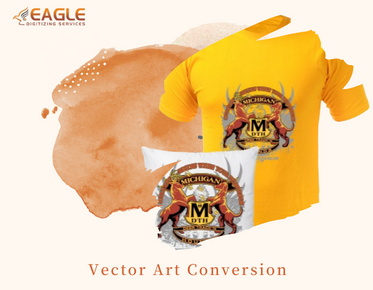Giclée Uncovered: What Is It and Its Common Uses?
Giclée printing
has revolutionized the art and photography world, offering a high-quality
reproduction method that captures the essence of original works. Unlike
traditional printing techniques, giclée uses advanced inkjet technology to
produce vibrant, detailed images on various media. This technique is not only
popular among artists but also serves various industries, including fine art
reproduction, photography, and home decor. In this article, we’ll explore what
giclée is, how it works, and its common uses, helping you understand why it has
become a favorite among creatives and collectors.
The Technology Behind Giclée Printing
Giclée printing
utilizes advanced inkjet technology to produce prints on a variety of
substrates. It employs specialized printers that use pigment-based inks, which
are more stable and longer-lasting than dye-based inks commonly used in
standard inkjet printers. This technology allows for an exceptional range of
colors and gradients, making it possible to capture the nuances of original
artworks with remarkable precision. The use of high-resolution images, combined
with the printer's ability to mix inks in minute quantities, results in prints
that closely mimic the look and feel of the original piece.
The Process of Giclée Printing
Step-by-Step
Breakdown of the Giclée Printing Process
Creating a giclée
print is a meticulous process that begins with the preparation of a
high-resolution digital image. Here’s a simplified breakdown of the steps
involved:
- Image Preparation: The
original artwork is scanned or photographed using high-quality equipment,
ensuring every detail is captured. This digital file should ideally be at
least 300 DPI (dots per inch) for optimal print quality.
- Color Calibration: The
digital image is adjusted for color accuracy, matching it to the original
artwork as closely as possible. This may involve using software tools to
fine-tune colors and contrast.
- Choosing the Right Materials: Selecting
appropriate paper and inks is crucial for achieving the desired outcome.
Giclée printers often use archival-quality paper that enhances the
vibrancy and longevity of the prints.
- Printing: The final
step involves using a giclée printer to produce the print. This process
can take several minutes, as the printer carefully lays down ink in
precise patterns to recreate the image.
- Finishing Touches: After
printing, the artwork may undergo additional treatments, such as
varnishing or framing, to protect it and enhance its presentation.
Choosing
the Right Paper and Inks for Giclée
The choice of
paper and ink significantly influences the final quality of a giclée print.
Archival paper, often made from cotton or alpha-cellulose, is favored for its
durability and ability to preserve colors over time. Similarly, using
pigment-based inks ensures that prints are resistant to fading and yellowing,
making them suitable for display in a variety of environments. Selecting the
right combination of materials allows artists to achieve the desired aesthetic
while ensuring longevity.
The
Role of High-Resolution Images in Giclée Quality
High-resolution
images are paramount in giclée printing. They enable the printer to capture
fine details and subtle color variations that contribute to the overall quality
of the print. When the resolution is too low, prints can appear pixelated or
lack the depth found in the original artwork. For the best results, artists
should strive to use digital files that are crisp, clear, and adequately sized
for the intended print dimensions.
Benefits of Giclée Printing
Why
Artists Love Giclée: Quality and Fidelity
Artists are drawn
to giclée printing for its ability to reproduce their work with incredible
fidelity. The vibrant colors and sharp details offered by giclée prints enable
artists to share their creations with a broader audience without compromising
on quality. This method allows them to offer limited editions or open editions
that reflect the authenticity of their original works, providing collectors
with prints that are as close to the real thing as possible.
The
Longevity of Giclée Prints: Fading and Preservation
One of the most
compelling advantages of giclée printing is its longevity. The pigment-based
inks used in this process are designed to withstand the test of time, resisting
fading and deterioration. When paired with archival-quality papers, giclée
prints can last for decades, making them an excellent investment for collectors
and art enthusiasts. This durability means that artwork can be displayed in
homes, galleries, or exhibitions without fear of losing its vibrancy.
Customizability:
Tailoring Prints to Your Needs
Giclée printing
offers a remarkable degree of customizability. Artists can choose the size,
paper type, and even the finishing options for their prints. This flexibility
allows them to cater to specific markets, whether they are producing large
canvas prints for galleries or smaller pieces for individual collectors.
Additionally, the ability to print on demand means that artists can minimize
waste and only produce what they need, aligning with sustainable practices.
Common Uses of Giclée Prints
Fine
Art Reproductions: Bringing Art to Life
One of the most
popular uses for giclée printing is in fine art reproductions. Artists can
create high-quality prints of their original works, allowing them to reach a
wider audience without diminishing the value of their creations. These
reproductions can be sold in galleries, online shops, or directly to
collectors, providing an income stream while maintaining the integrity of the
original art.
Photography
Prints: Capturing Every Detail
Photographers
also favor giclée printing for its exceptional ability to capture intricate
details. Giclée prints of photographs can highlight the subtle nuances of light
and shadow, making them a preferred choice for displaying stunning landscapes,
portraits, or abstract images. These prints are ideal for exhibitions,
portfolios, or personal displays, showcasing the photographer's vision in
vibrant detail.
Home
Decor: Transforming Spaces with Giclée Art
Giclée prints
have found a home in interior design, serving as captivating focal points in
various spaces. From living rooms to offices, these prints can transform
environments, adding character and sophistication. The variety of styles and
themes available makes it easy to find giclée art that complements any décor,
enhancing the aesthetic appeal of a room.
Commercial
Uses: Marketing and Branding Solutions
Beyond personal
and artistic applications, giclée printing has practical uses in commercial
settings. Businesses can utilize giclée prints for marketing materials, such as
posters and banners, that demand high-quality visuals to attract customers. The
clarity and vibrancy of giclée prints make them effective tools for branding,
helping companies convey their message with style.
Giclée in the Art World
How
Giclée Has Changed the Landscape for Artists
The introduction
of giclée printing has transformed the way artists approach reproduction. No
longer limited to traditional printmaking methods, artists now have the
opportunity to create high-quality reproductions that closely mimic the
original works. This shift has enabled greater accessibility to art, allowing
more people to appreciate and collect work that they might not otherwise be
able to afford.
Limited
Editions vs. Open Editions: What’s the Difference?
Within the giclée
printing realm, the distinction between limited and open editions is
significant. Limited editions are produced in finite quantities, often signed
and numbered by the artist, enhancing their value and appeal to collectors.
Open editions, on the other hand, have no set limits on production, making them
more accessible but generally less valuable in the art market. Understanding
these differences can help both artists and collectors make informed decisions.
The
Value of Giclée Prints in the Art Market
Giclée prints
have carved out a niche in the art market, holding significant value among
collectors. Their ability to faithfully replicate original works while
maintaining high quality makes them a desirable option for those looking to
invest in art. As the demand for affordable art continues to rise, giclée
prints are poised to remain a staple in both galleries and private collections.
Giclée vs. Other Print Types
Comparing
Giclée with Lithographs and Serigraphs
When comparing
giclée prints to traditional print types such as lithographs and serigraphs,
several distinctions emerge. Lithographs are created through a complex process
involving chemical reactions on stone or metal plates, while serigraphs use a
stencil method applied through a mesh screen. Giclée printing, in contrast,
offers unparalleled versatility and detail, requiring less setup time and
allowing for on-demand printing. Each method has its merits, but giclée stands
out for its accessibility and quality.
Why
Choose Giclée Over Digital or Offset Printing?
While digital and
offset printing are viable options for mass production, giclée printing shines
in scenarios where quality and detail are paramount. Offset printing can
produce large quantities but often sacrifices some level of detail and color
accuracy. Giclée printing, using advanced inkjet technology, delivers a level
of precision and fidelity that is particularly appealing for artists and
photographers aiming to preserve the integrity of their work.
The
Environmental Impact of Giclée Printing
Giclée printing
also holds potential environmental advantages. The on-demand nature of giclée
printing reduces waste, as prints are only produced as needed. Additionally,
many giclée printers use eco-friendly inks and papers, aligning with
sustainable practices in the art and printing industries. This conscientious
approach appeals to environmentally-minded artists and consumers alike.
Giclée for Personal Projects
How
to Create Your Giclée Prints at Home
Creating giclée
prints at home is an exciting prospect for artists and hobbyists. Start by
investing in a high-quality inkjet printer capable of using pigment-based inks.
Next, ensure you have the right paper—look for archival-quality options
compatible with your printer. Finally, prepare your digital images
meticulously, and you’ll be well on your way to producing stunning giclée
prints from the comfort of your studio.
Tips
for Preparing Images for Giclée Printing
Preparation is
key when it comes to giclée printing. Begin by ensuring your images are at
least 300 DPI and accurately represent the colors you want to capture. Color
calibration is essential; consider using a color profile to ensure consistency
between your screen and printer. Taking these steps will help guarantee that
your prints achieve the desired quality.
Creating
Unique Gifts with Giclée Art
Giclée prints
also offer a wonderful avenue for creating unique, personalized gifts. Whether
it’s a special piece for a loved one or a customized print for an occasion, the
versatility of giclée allows for endless creativity. Transforming personal
artwork or cherished photographs into giclée prints can result in meaningful
gifts that leave a lasting impression.
Giclée printing represents a fusion of technology and artistry, enabling artists and photographers to share their work with a wider audience while maintaining unparalleled quality. Its versatility has led to its integration across various industries, from fine art to commercial applications. As the demand for high-quality reproductions continues to grow, embracing giclée printing is not just a choice; it’s an opportunity to elevate creativity and preserve the integrity of artistic expression in today’s world.



.png)